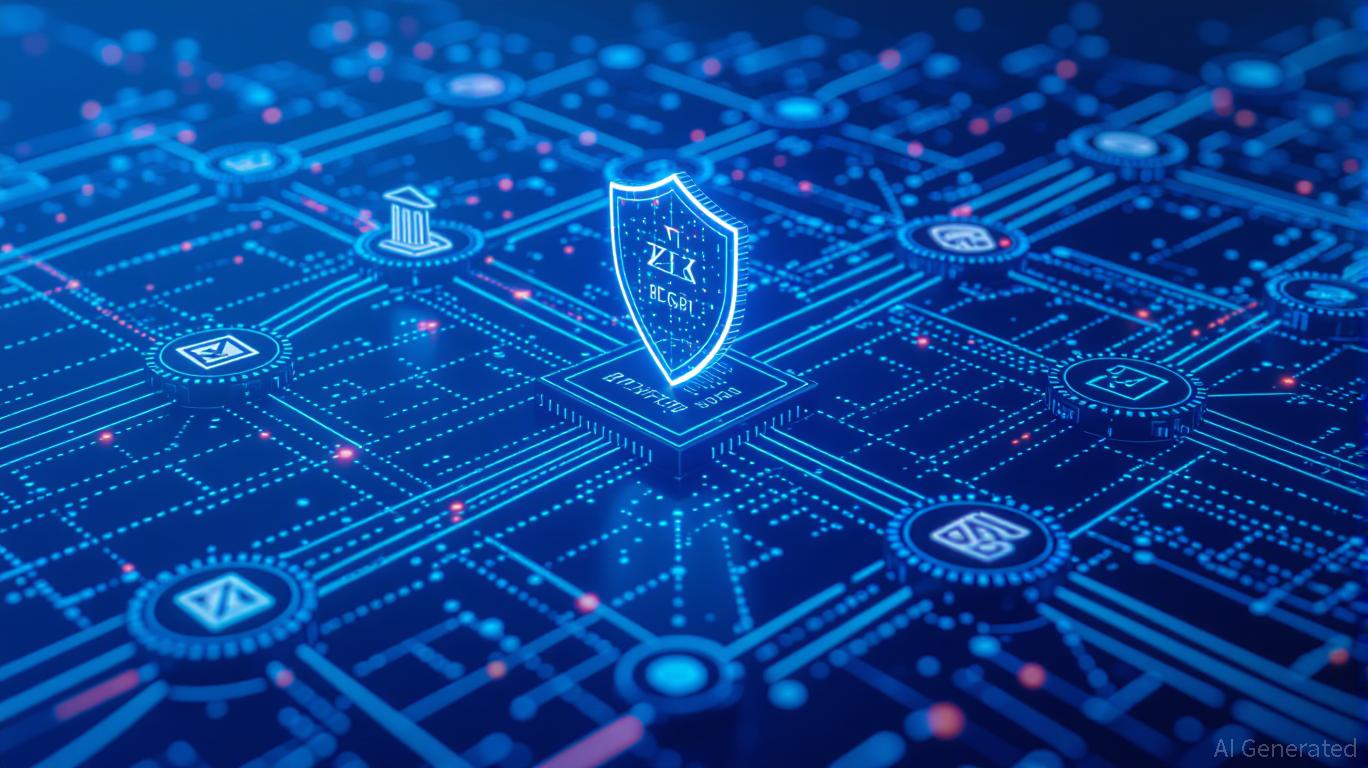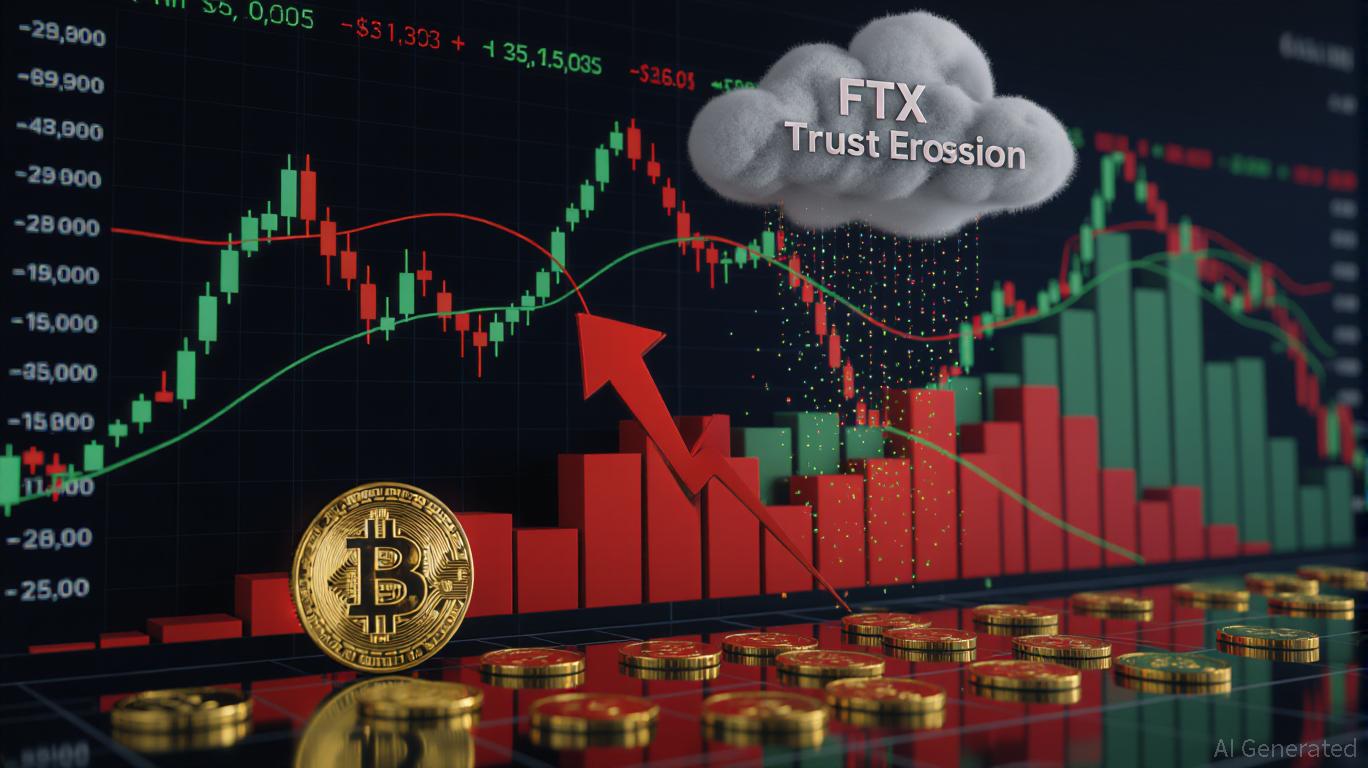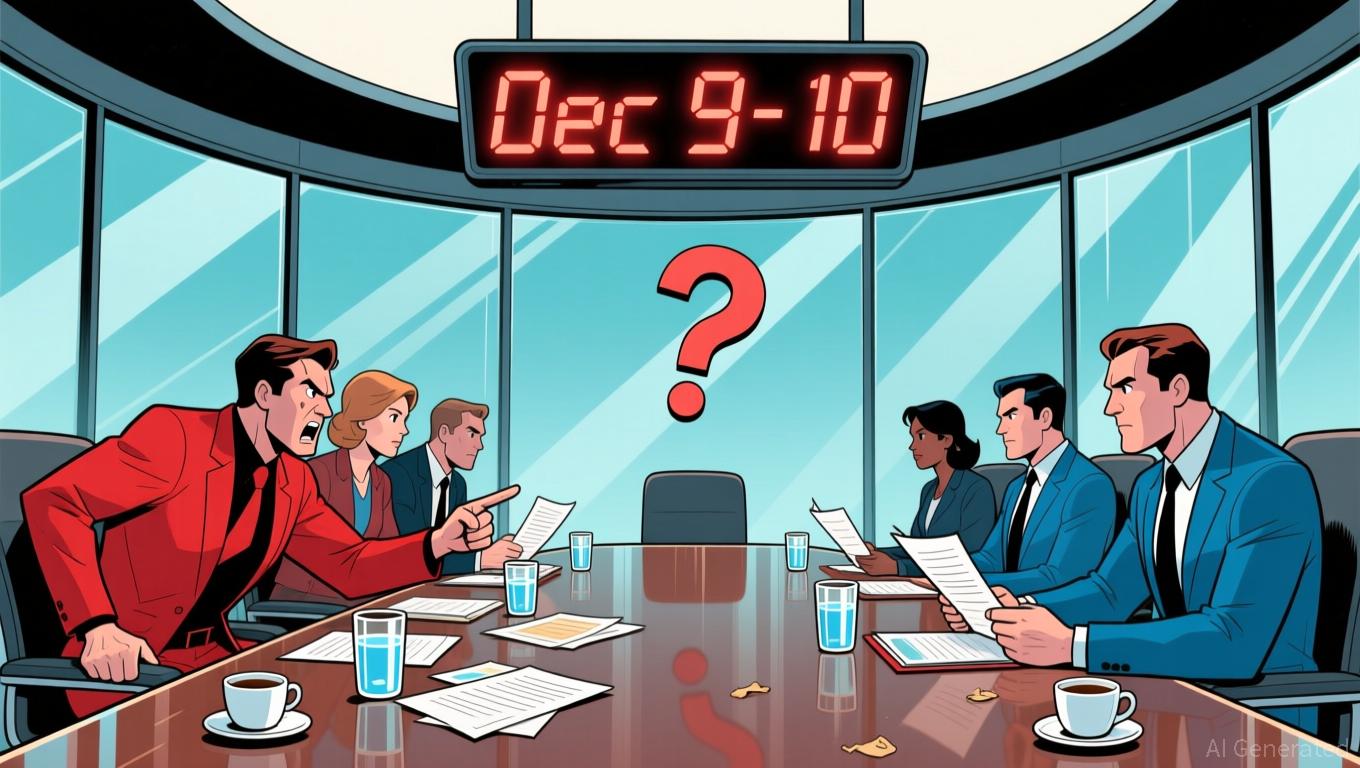Vitalik Buterin's Perspective on ZK: Driving Institutional Embrace in DeFi and Privacy-Focused Assets
- Vitalik Buterin's ZK advocacy reshapes blockchain infrastructure for DeFi and privacy-centric assets. - GKR protocol breakthroughs enable 43,000 TPS with Deutsche Bank , Sony adopting ZK-based hybrid compliance models. - Shielded CSV protocol combines ZK-SNARKs with regulatory compliance to address post-Tornado Cash scrutiny. - 2025 regulatory shifts and 70% gas fee reductions position ZK networks as strategic infrastructure for institutional crypto adoption.
Technical Breakthroughs: Where Scalability Meets Security
Buterin’s advancements with the GKR protocol have dramatically improved ZK verification,
The efficiency of the GKR protocol has also paved the way for quantum-resistant blockchain designs,
Institutional Adoption: Turning Compliance into an Edge
The uptake of ZK technology among institutions is gaining momentum, fueled by the challenge of balancing privacy with regulatory demands. Deutsche Bank’s collaboration with ZKsync is a prime example. The bank is
Likewise, Sony and Citibank have
One notable application is the “Shielded CSV” protocol,

Regulatory Clarity: Opportunity and Challenge
Changes in regulation have been instrumental in the rise of ZK adoption.
The passage of the U.S. GENIUS and CLARITY Acts in 2025 has further strengthened institutional trust, with crypto investments expected to grow as ZK networks prove both cost-effective and compliant
Future Implications: ZK as the Backbone of Blockchain
The long-term effects of ZK integration are significant. By 2025, ZK layer 2 solutions like Lighter and ZKsync are reaching 24,192 TPS and 15,000 TPS, respectively, with ZK-rollups managing 83% of enterprise smart contracts
For investors, projects built on ZK technology are set to lead the next wave of blockchain progress. Protocols that blend technical strength with governance models that reduce risk—like Shielded CSV and ZKsync—are poised to draw ongoing institutional investment. Meanwhile, privacy-oriented assets that use ZK proofs for transparent compliance (such as tokenized securities) are likely to see broader acceptance as international standards develop
Conclusion
Vitalik Buterin’s championing of ZK technology has sparked a new era for blockchain’s appeal to institutions. By simultaneously solving issues of scalability, privacy, and regulatory compliance, ZK proofs are emerging as the cornerstone of future financial systems. As major players like Deutsche Bank and Sony adopt these innovations, ZK-powered DeFi and privacy-first assets are set to reshape the cryptocurrency landscape. For investors, the message is unmistakable: ZK technology has moved from speculation to strategy.
Disclaimer: The content of this article solely reflects the author's opinion and does not represent the platform in any capacity. This article is not intended to serve as a reference for making investment decisions.
You may also like
Revenue and Growth: Diverging Approaches in Global Fiscal Policies
- Brazil's tax-exempt bonds strain public finances, costing $11.3B annually amid rising issuances. - Japan unveils $110B+ fiscal stimulus for AI, semiconductors , and energy, potentially reaching $133B. - UK abandons income tax hikes, opting for threshold adjustments to address £35B budget gap. - Mexico's Supreme Court upholds $1.8B tax claims against billionaire Salinas Pliego's firms. - Global trend shifts toward targeted fiscal tools over broad tax hikes amid economic pressures.

The Unexpected Bitcoin Plunge in November 2025: Causes Behind the Drop and Future Prospects for Cryptocurrency Investors
- The November 2025 BTC crash resulted from Fed tightening, lingering FTX trust erosion, and institutional outflows. - Fed's hawkish liquidity controls and inflation focus created toxic conditions for Bitcoin's low-rate-dependent market. - FTX's unresolved $7.1B payouts and $20B institutional exodus since 2022 amplified panic selling through trust deficits. - Crypto investors must now wait for Fed policy clarity and prioritize transparent platforms with regulatory compliance.

Bitcoin Updates Today: Fed Navigates Uncertainty as December Rate Cut Remains Unclear
- Market expectations for a Fed rate cut in December dropped to 52% from 95% a month ago, reflecting deepening policymaker divisions. - Hawks like Collins emphasize inflation risks, while doves argue easing is needed to avoid restrictive policies amid weak labor data. - A government shutdown delayed critical economic reports, complicating decisions as structural shifts demand nuanced policy responses. - Bitcoin gains were capped by reduced cut odds, while broader markets remain sensitive to Fed signals on

Solana News Update: Solana’s Fast Network Draws $1.5 Billion in Stablecoin Growth as USDC and USDT See Significant Increases
- Circle mints $500M USDC on Solana , leveraging its 4,000 TPS speed and $0.002 fees to boost DeFi liquidity. - Solana's 2.4M active addresses and 83M transactions highlight its appeal as Ethereum's high-throughput rival. - Tether simultaneously issues $1B USDT on Ethereum , contrasting with Solana's retail-friendly low-cost model. - Institutional adoption grows via Solana Staking ETF and major firm participation, challenging Ethereum's upgrades. - $1.5B stablecoin surge reflects demand for cross-chain sta
